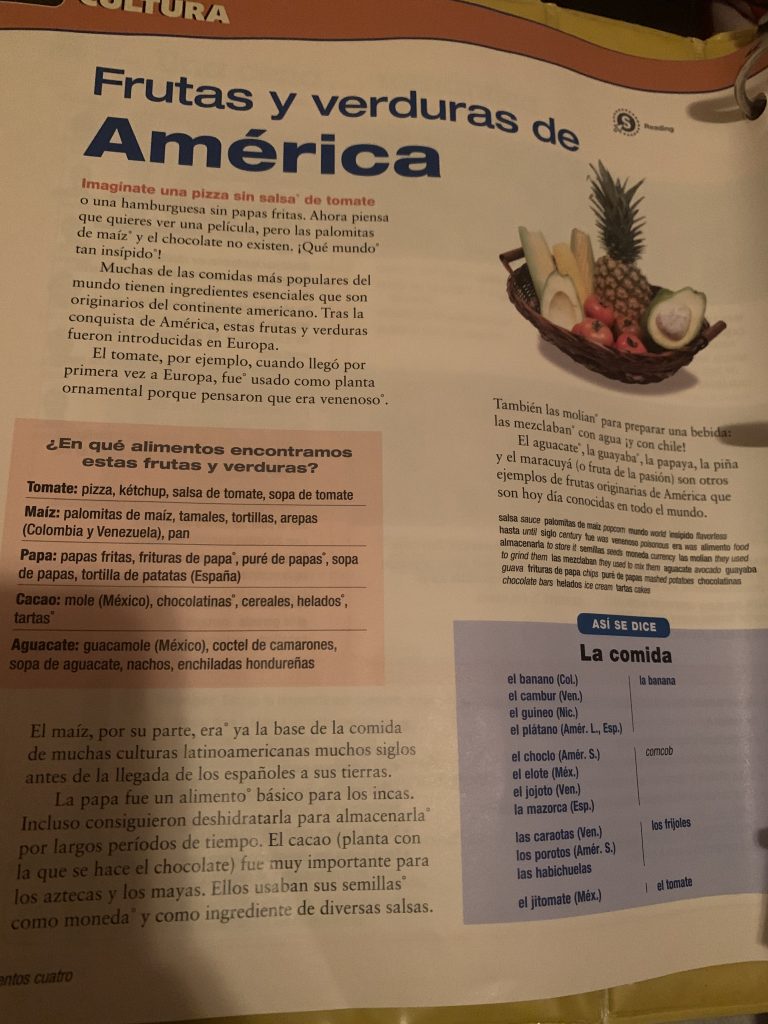Interpretive, Interpersonal, and Presentational Modes of Communication
Exploring Culture
In the video above, the professor shared with the class, are the various markets of Latin America. I researched various markets to help me get a better understanding of the culture’s value and attitudes. The research showed the food, a variety of musical instruments, clothing various markets have for purchase. Comparing to the United States, it also has their own version of an open air market. I noticed that both cultures has different values and attitudes around shopping. For example, Mercado Central in Santiago Chile it is common to find live animals are well as local specialties like banana leafs. I think it would be good to barter on the purchase price of items.. Yet, others may think that it is absurd. I learned that every country has their own customs and that we all should learn to be acceptance of other cultures; especially for how diverse the United States is.
Interpersonal Communication
The TalkAbroad is a network for students to practice talking with a native speaker in the select languages. It shares awareness to different culture from another country and provides language exposure for oral proficiency. The recording was about a conversation about social media between Zenayda and me.
The growth in my pronunciation skills has progressed with practicing the language with TalkAbroad. The hardest part was finding the words to communicate with my speaking partner. I struggled with pronunciation. I worked on trying to listen and use the word as the word itself rather than translating it. The thing that I would do differently is practice using the language more. I learned that I should practice speaking with others more, in order for my language skills to grow.
Presentational Speaking
To practice my Spanish I looked for simple poems to read out.
I read the English translation of the poem then I practiced reading it in Spanish using my hands to help time the rhythm and pronunciation. This helped because it I got practice speaking words that I had not come across. I would become better at speaking Spanish by increasing the difficulty of the poems I read.
Presentational Writing
comp-2-pdfThe composition above is about my daily routine if I could live anywhere. It was written for a class assignment.
I wrote it in English of what I wanted to say. Then, I translated one sentence at a time until I completed my paragraph. I believe I’ve grown in my the language when I started to type Spanish words in place of my English words when I was writing this composition. For example, sometimes I call my friend “mi amiga”, so I automatically type “mis amigas” in place of “my friends” . I have difficulty with remembering words, so I practice hand writing the words repeatedly. In order for me to write better, I would practice writing, typing, and texting my friends more in Spanish.
Interpretive Listening
My tutor suggested I watch and listen to different to videos to help me. Listening to her advice helped me learn the irregular vocabulary verbs in the correct form. The challenging part of learning the Spanish language is to conjugate the verbs correctly in a sentence. To overcome this obstacle I practiced writing and typing the verbs in all forms of present tense, past tense, and irregular verbs. I also listen to the Latin local radio station when I’m driving, it assists in my listening skills. My take away from the listening experience is that the more I am exposed to the Spanish language, the more I will I understand.
Interpretive Reading

The interpretive communication activity I did in the classroom was reading about the foods of Latin America in the textbook. It tells about the different fruits, vegetables, drinks and entrees in the Spanish world.
I did excel in my reading skills by using context clues within the sentences in order to understand the content. The only challenging part about the interpretive communication activity was reading words I did not fully recognize, so I had to look up in the dictionary. The most interesting thing is learning about how to order meals outside the United States. I read about how many hispanic countries offer local specialities.. In Costa Rica sopa negro is a favorite dish., I learned that waiters can recommend dishes on the menu. My take away from the reading is how nice it could be more restaurantes offered local specialities.